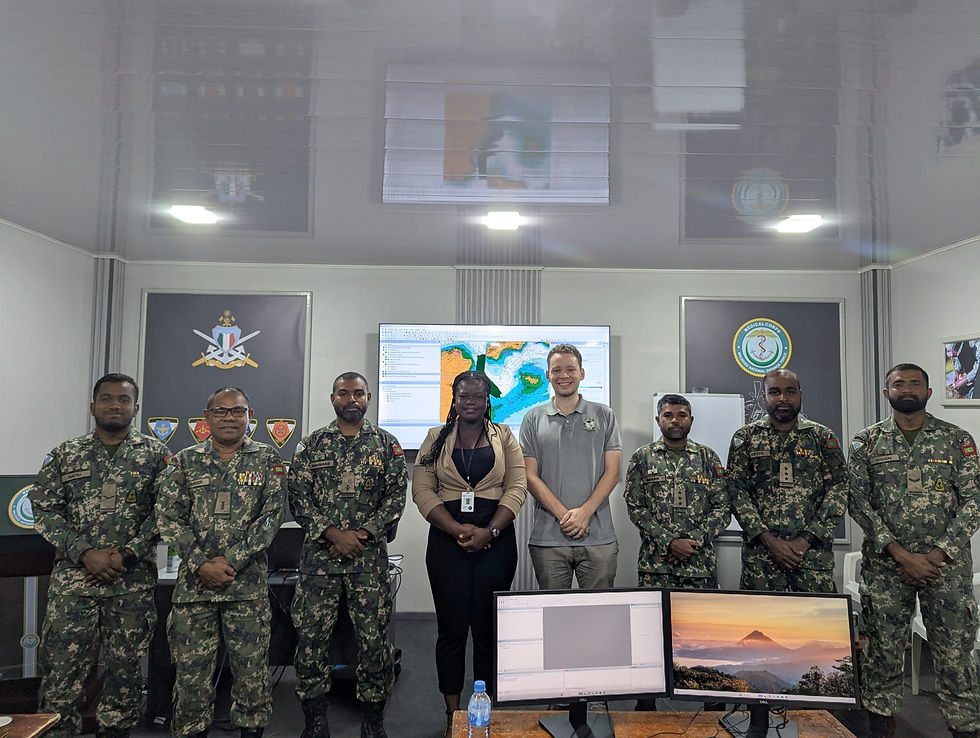Seismic Asia Pacific and NORBIT Subsea Host Successful WA User Conference in Fremantle
- Jeremy Monteath
- Dec 2, 2024
- 3 min read
Updated: Dec 10, 2024
Last week, the Seismic Asia Pacific Western Australia User Conference brought together a mix of industry professionals, end users, and technology experts to share insights and learn about the latest in marine surveying technology. Partnering with NORBIT Subsea, the event highlighted the new NORBIT Winghead i80S Apogee System and included fascinating talks and real-world applications presented by experienced users.
Here’s a recap of what made this event so engaging and informative.

Introducing the NORBIT Winghead i80S Apogee System
A major highlight of the day was the unveiling of the NORBIT Winghead i80S Apogee System. This sonar system is all about precision, ease of use, and getting the job done efficiently. A few key points that stood out:
Compact Design: The single-cable setup makes transport and deployment simple, with fewer failure points to worry about.
High-Resolution Data: It delivers up to 1024 beams at 0.5x0.9° widths, meaning you get detailed, reliable results every time.
Efficiency at Its Core: Dual swath technology increases sounding density, which can either speed up survey work or allow for more detailed data collection in the same timeframe.
Motion Stabilization: This feature helps maintain data quality by compensating for vessel movement, ensuring consistent results even in less-than-ideal conditions.
Full INS Integration: With everything working together in one system, setup is simpler, and operators can hit the ground running without a steep learning curve.
The system seems tailor-made for teams looking for reliability and efficiency in their marine survey work.
Presentations from NORBIT End Users
One of the best parts of the conference was hearing from experts who use these technologies in real-world scenarios. Their insights brought the equipment and its applications to life.
Scott Thompson – Port of Brisbane
Scott spoke about the extensive hydrographic work done along the East Coast of Australia. From his experience, the NORBIT sonars have proven themselves to be reliable tools, even in tough environments where precision is critical.

Robert Bright – Fugro
Robert provided a deep dive into Fugro’s uncrewed surface vessels (USVs) and the remote operations they run out of Perth. Their USVs, the Maali (14-day endurance) and Kwilena (25-day endurance), are equipped with features like gyroscopic stabilization and configurable sensor setups.
He also shared how NORBIT sonars have supported construction projects in low-visibility conditions. It was fascinating to learn about their Perth Remote Operations Centre, a secure hub running 24/7, where their teams control USVs and manage projects remotely.

Neville Benson – Blue Spatial Australia
Neville took us through a survey project in Geraldton, where the NORBIT iWBMS system was mounted on a small vessel, the Freedom II. He emphasized how quick and easy it was to get set up, even on a vessel of opportunity. The shallow-water survey (0–10m LAT) highlighted the system’s ability to handle a range of tasks, from dredging to environmental monitoring, with minimal hassle.

Presentations from NORBIT and SAP
The conference wasn’t just about equipment; it was also a chance to celebrate partnerships and collaboration. Paul Duncan, CEO of Seismic Asia Pacific, reflected on the company’s long-standing relationship with NORBIT Subsea. It was a reminder of how much can be achieved when companies work together to push the possibilities of what’s possible.
I delivered a video presentation showcasing the Maritime Robotics' Otter USV, a widely used platform for NORBIT multibeams. The video included a setup walkthrough and a brief overview of the Vehicle Control Station, where all the functions are managed.
We also heard from NORBIT’s VP of Sales for the APAC region, Jerome Tsu and Global Field Service Manager, Adam Junner, who shared how the development of the Winghead i80S Apogee System was shaped by listening to feedback from users. Adam walked us through features like beam steering, dual swath technology, and motion stabilization, explaining how these capabilities reduce time spent on surveys and deliver more consistent results.


Jerry capped off the technical sessions by sharing processed data from a survey conducted just a day earlier in Fremantle Harbor. Seeing the system’s capabilities in action brought everything full circle and provided a clear picture of how it can be applied in real-world operations.
The NORBIT Winghead i80S Apogee System is an impressive piece of technology, but what stood out most at the conference was the sense of community. From the technical presentations to the live data review in Fremantle Harbor, it was clear that these tools are part of a much bigger story—one about solving real-world challenges with ingenuity and collaboration.
A big thank you to everyone who joined us from across Western Australia. Additionally, thank you to Andrew Richardson from Surrich Hydrographics for lending us his boat to conduct demonstrations. Your questions, insights, and enthusiasm made this event a success. We’re looking forward to seeing you again and continuing the conversation about how we can make hydrographic surveying even better.







































